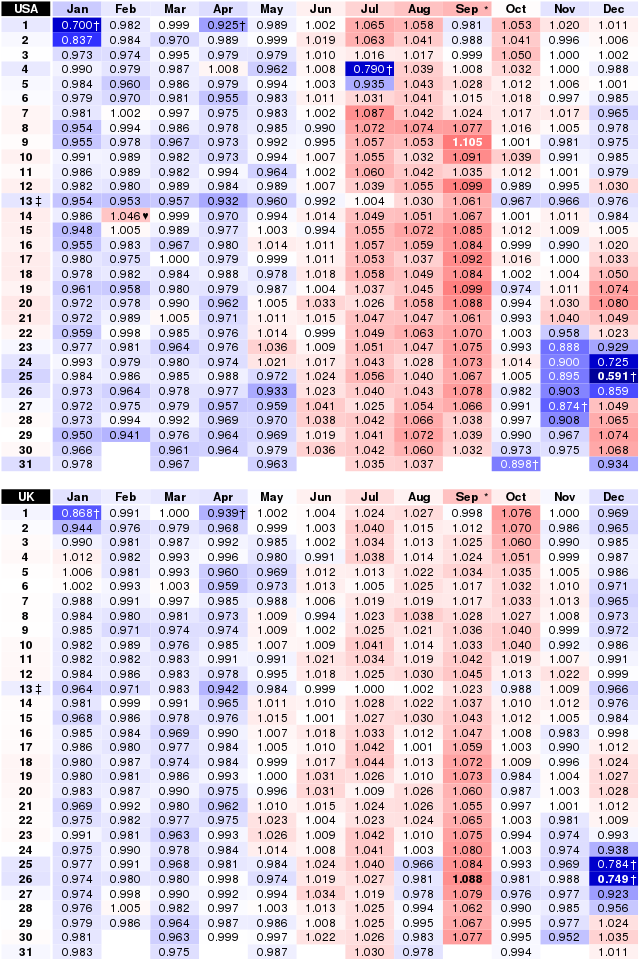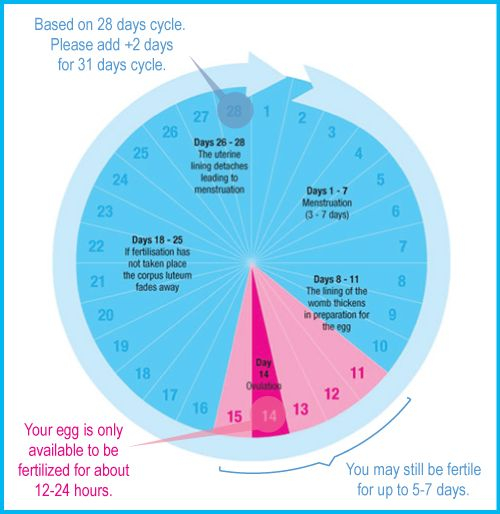**Navigating the Signs of Autism During Pregnancy: A Comprehensive Guide**
Autism spectrum disorder (ASD) is a complex neurodevelopmental condition that affects an individual’s communication, social interaction, and behavior. While the exact causes of autism are not fully understood, research suggests that both genetic and environmental factors play a significant role in its development. This guide aims to provide an overview of the potential signs of autism that may be observed during pregnancy, exploring the interplay between maternal health, genetic predispositions, and environmental influences.
Early detection and intervention are crucial for optimizing outcomes for children with autism. By understanding the potential signs and risk factors, pregnant women and their healthcare providers can work together to ensure timely diagnosis and support.
Prenatal Development and Autism
The typical stages of fetal development include the embryonic period (weeks 1-8), the fetal period (weeks 9-28), and the perinatal period (weeks 29-40). During the embryonic period, the major organs and body systems are formed. The fetal period is characterized by rapid growth and differentiation of the fetus. The perinatal period is the transition from the fetal environment to the extrauterine environment.
Environmental factors can impact fetal development. These factors include maternal nutrition, exposure to toxins, and maternal stress. Maternal nutrition is essential for providing the fetus with the nutrients it needs to grow and develop properly. Exposure to toxins, such as alcohol, drugs, and environmental pollutants, can damage the fetus. Maternal stress can also affect fetal development, as it can lead to the release of stress hormones that can cross the placenta and reach the fetus.
Risk Factors for Autism During Pregnancy
There are a number of known risk factors for autism during pregnancy. These include:
- Advanced maternal age
- Obesity
- Diabetes
- Exposure to certain medications, such as valproic acid
- Family history of autism
Behavioral Signs of Autism During Pregnancy
Behavioral changes during pregnancy may be indicative of autism in the developing fetus. These changes can provide valuable insights into the potential neurological development of the baby and warrant further investigation.
Pregnant women who have children later diagnosed with autism have been observed to exhibit certain behavioral patterns. These patterns may include:
Prenatal Attachment and Interaction
- Reduced fetal movement and activity in the womb.
- Lack of response to external stimuli, such as sound or touch.
- Delayed or absent eye contact with the mother during prenatal scans.
Maternal Emotional State
- Increased anxiety and depression during pregnancy.
- Difficulty bonding with the developing fetus.
- Excessive worry or concern about the baby’s health.
Cognitive and Sensory Processing
- Altered sleep patterns, such as insomnia or excessive daytime sleepiness.
- Unusual sensory sensitivities, such as aversion to certain sounds or textures.
- Difficulty processing and interpreting social cues.
Other Behavioral Signs
- Changes in appetite or eating habits.
- Difficulty concentrating or making decisions.
- Increased irritability or mood swings.
Physical Signs of Autism During Pregnancy
Autism is a neurodevelopmental disorder that affects a person’s social and communication skills. While the exact cause of autism is unknown, research suggests that both genetic and environmental factors may play a role. There is some evidence to suggest that certain physical signs during pregnancy may be associated with an increased risk of autism in the child.
Prenatal Screening and Diagnostic Tests
Prenatal screening and diagnostic tests can be used to detect certain physical signs that may be associated with autism. These tests include:
- Ultrasound: An ultrasound can be used to detect certain physical abnormalities in the fetus, such as an enlarged head or heart defects.
- Amniocentesis: Amniocentesis is a procedure in which a sample of amniotic fluid is taken from the uterus. This fluid can be tested for genetic abnormalities that may be associated with autism.
- Chorionic villus sampling (CVS): CVS is a procedure in which a sample of chorionic villi is taken from the placenta. This tissue can be tested for genetic abnormalities that may be associated with autism.
Physical Indicators of Autism in the Fetus
Some of the physical indicators that have been linked to autism in the fetus include:
- Enlarged head circumference: A head circumference that is larger than average may be a sign of autism. This is because autism is associated with an overgrowth of the brain.
- Heart defects: Heart defects are more common in children with autism than in children without autism. This is because autism is associated with a number of genetic abnormalities that can also affect the heart.
- Facial features: Children with autism may have certain facial features that are different from children without autism. These features can include a wide-set eyes, a narrow forehead, and a long philtrum (the groove between the nose and the upper lip).
It is important to note that not all children with autism will have these physical signs. Additionally, these signs can also be present in children who do not have autism. Therefore, it is important to consult with a doctor to determine whether these signs are a cause for concern.
Maternal Health and Autism
Maternal health plays a crucial role in the development of the fetus. Certain maternal health conditions and lifestyle factors during pregnancy have been associated with an increased risk of autism in the child.
Maternal stress, for instance, can lead to the release of stress hormones, which may affect fetal brain development. Similarly, poor nutrition and a lack of essential nutrients during pregnancy can impact fetal growth and development, including brain development.
Maternal Health Conditions and Autism Risk
Some specific maternal health conditions have been linked to an increased risk of autism in the child. These include:
- Preeclampsia: A pregnancy-specific condition characterized by high blood pressure and protein in the urine, which can restrict blood flow to the placenta and affect fetal development.
- Gestational diabetes: A type of diabetes that develops during pregnancy, which can lead to high blood sugar levels and potential complications for both the mother and the fetus.
- Thyroid disorders: Conditions that affect the thyroid gland, such as hypothyroidism (underactive thyroid) and hyperthyroidism (overactive thyroid), can impact fetal brain development.
- Autoimmune diseases: Conditions in which the immune system mistakenly attacks the body’s own tissues, such as lupus and rheumatoid arthritis, have been associated with an increased risk of autism in the child.
Genetic and Environmental Factors

Autism spectrum disorder (ASD) is a complex neurodevelopmental condition with a strong genetic basis. However, environmental factors also play a significant role in its development.
Genetic factors account for around 80% of the risk of developing autism. Several genetic mutations have been linked to ASD, including mutations in genes involved in brain development, synaptic function, and immune regulation. Family history of autism is also a significant risk factor, with siblings of children with autism having a 10-fold increased risk of developing the condition.
Environmental factors that have been linked to autism include prenatal exposure to certain chemicals, such as pesticides and air pollution, as well as maternal infections during pregnancy. Maternal stress and advanced maternal age have also been associated with an increased risk of autism.
The interplay between genetic and environmental factors in the development of autism is complex. It is likely that a combination of genetic susceptibility and exposure to certain environmental triggers leads to the development of the condition.
Genetic Factors
Genetic factors account for around 80% of the risk of developing autism. Several genetic mutations have been linked to ASD, including mutations in genes involved in brain development, synaptic function, and immune regulation.
- Single-gene mutations: These are rare mutations that occur in a single gene. They can cause a wide range of symptoms, including intellectual disability, autism, and physical abnormalities.
- Copy number variations (CNVs): These are deletions or duplications of large sections of DNA. They can also cause a wide range of symptoms, including autism, intellectual disability, and physical abnormalities.
- Polygenic risk: This refers to the combined effect of multiple common genetic variants that each have a small effect on the risk of developing autism.
Environmental Factors
Environmental factors that have been linked to autism include prenatal exposure to certain chemicals, such as pesticides and air pollution, as well as maternal infections during pregnancy. Maternal stress and advanced maternal age have also been associated with an increased risk of autism.
- Prenatal exposure to chemicals: Exposure to certain chemicals during pregnancy has been linked to an increased risk of autism. These chemicals include pesticides, air pollution, and heavy metals.
- Maternal infections during pregnancy: Maternal infections during pregnancy, such as rubella and cytomegalovirus, have been linked to an increased risk of autism.
- Maternal stress: Maternal stress during pregnancy has been associated with an increased risk of autism. This is thought to be due to the effects of stress hormones on the developing fetal brain.
- Advanced maternal age: Advanced maternal age has been associated with an increased risk of autism. This is thought to be due to the increased risk of genetic mutations in older eggs.
The interplay between genetic and environmental factors in the development of autism is complex. It is likely that a combination of genetic susceptibility and exposure to certain environmental triggers leads to the development of the condition.
Diagnostic Considerations
Diagnosing autism during pregnancy is a complex and challenging task due to the subtle and often transient nature of prenatal signs. Moreover, the developing fetus is constantly changing, making it difficult to make definitive conclusions based on a single observation or assessment.
Multidisciplinary teams, including obstetricians, developmental pediatricians, and psychologists, play a crucial role in assessing and interpreting prenatal signs. They consider the mother’s medical history, genetic testing results, and ultrasound findings, along with the mother’s observations and concerns.
The ethical implications of prenatal diagnosis are significant. Parents need to be fully informed about the potential benefits and risks of testing, including the possibility of false positives and false negatives. They should have the opportunity to make informed decisions about whether or not to pursue further testing or interventions.
Challenges in Diagnosing Autism During Pregnancy
* Subtle and Transient Signs: Prenatal signs of autism can be subtle and transient, making them difficult to detect and interpret.
* Rapid Fetal Development: The developing fetus undergoes rapid changes, which can make it challenging to make definitive conclusions based on a single observation or assessment.
* Limited Diagnostic Tools: Currently, there are no definitive prenatal diagnostic tests for autism. Diagnosis relies on a combination of clinical observations, genetic testing, and ultrasound findings.
Role of Multidisciplinary Teams
* Comprehensive Assessment: Multidisciplinary teams provide a comprehensive assessment by combining the expertise of different specialists.
* Interpretation of Prenatal Signs: They interpret prenatal signs in the context of the mother’s medical history, genetic testing results, and ultrasound findings.
* Informed Decision-Making: They provide parents with information and support to help them make informed decisions about testing and interventions.
Ethical Implications of Prenatal Diagnosis
* Informed Consent: Parents should be fully informed about the potential benefits and risks of testing, including the possibility of false positives and false negatives.
* Decision-Making: Parents should have the opportunity to make informed decisions about whether or not to pursue further testing or interventions.
* Emotional Impact: Prenatal diagnosis can have a significant emotional impact on parents, who may experience anxiety, uncertainty, and guilt.
Management and Support
Managing and supporting pregnant women at risk of having a child with autism involves a range of interventions and support systems. These include prenatal counseling, early intervention, and family support.
Prenatal Counseling
Prenatal counseling provides information and guidance to pregnant women who are at risk of having a child with autism. This counseling can help women understand the risks and benefits of various prenatal tests, make informed decisions about their pregnancy, and prepare for the possibility of having a child with autism.
Early Intervention
Early intervention services are designed to provide support and therapy to children with autism and their families. These services can help children with autism develop skills and behaviors that can improve their quality of life. Early intervention services may include speech therapy, occupational therapy, physical therapy, and behavioral therapy.
Family Support
Family support is essential for pregnant women and families of children with autism. Family support can provide emotional support, practical assistance, and information about resources and services. Family support groups can also provide a sense of community and belonging for families of children with autism.
Future Research Directions
Research on autism during pregnancy is ongoing, and there are still many gaps in our knowledge. Future research should focus on identifying these gaps and developing new ways to study autism during pregnancy.
Emerging technologies and methodologies, such as neuroimaging and genetic sequencing, may enhance our understanding of prenatal signs of autism. These technologies can provide detailed information about the brain and other organs, and they can help us to identify risk factors for autism.
Specific Research Questions
Specific research questions that could contribute to the field and improve outcomes for families affected by autism include:
- What are the earliest signs of autism that can be detected during pregnancy?
- What are the risk factors for autism that can be identified during pregnancy?
- What are the best ways to prevent autism or improve outcomes for children with autism?
Answers to Common Questions
What are the most common behavioral signs of autism during pregnancy?
Behavioral changes in pregnant women that may be associated with autism in the fetus include increased anxiety, irritability, difficulty concentrating, and changes in sleep patterns.
Are there any physical signs of autism that can be detected during pregnancy?
Potential physical signs of autism that may be present during pregnancy include abnormal fetal growth, certain facial features, and heart defects.
How does maternal health impact the risk of autism in the child?
Maternal factors such as stress, nutritional deficiencies, and certain medical conditions during pregnancy have been linked to an increased risk of autism in the child.
What is the role of genetics in autism development?
Autism has a strong genetic component, with family history and specific genetic mutations playing a significant role in its development.
What are the challenges of diagnosing autism during pregnancy?
Diagnosing autism during pregnancy is complex due to the overlapping symptoms with other conditions and the difficulty in observing the child’s behavior directly.





